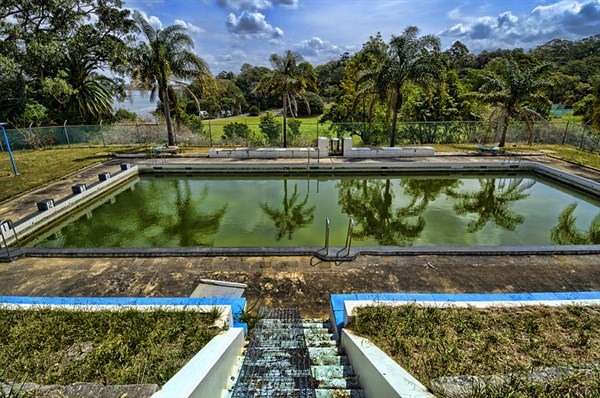How to Restore a Pool That Has Been Unused for Years
Today's post comes from freelance writer and swimming enthusiast Adrienne Erin, who gives some useful tips for restoring a stagnant swimming pool.

How to Restore a Pool That Has Been Unused for Years
Does your home pool look like a swamp, complete with lily pads, frogs, and something that looks suspiciously like a bog monster? If so you should probably call someone instead of reading this blog. If you pool is somewhere between a year old and swamp-esque, then we've got ourselves an audience. Fortunately, it is possible to restore a pool that has lain stagnant for a year or more - it will take a lot of hard work, but it will be worth it when you can jump into your beautiful, refreshing pool again.
Filtration
Get ready to get your hands a little dirty! The first step in restoring any pool that has been left unattended is fishing out as much debris as you can, using a pool vacuum or your skimmer net. Use the skimmer to remove dead leaves, fallen branches, wayward garbage and anything else that would probably not make it through your filter. If the water is murky, it may be hard to find the debris you are trying to get out; do the best you can.
Scrub the lining on the wall and floor of the pool with a pool brush and use a pool vacuum to try and remove as much algae as possible.
To ensure that your filter system does not malfunction after you have cleaned it out or replaced the parts, check it frequently, especially at the beginning. Clear your filter system out as often as necessary to avoid clogging. You may need to replace the filter several times over the course of your cleanup.
Sometimes it is possible to use the water that is already in your pool, without draining it. Sometimes you aren't quite so lucky. While it can be surprising how much filtration and chlorine can do to save your water, if it's a deep murky color that strikes fear into you at the very thought of getting into the water, you may want to just drain and refill it. It will be expensive, but you'll have greater peace of mind.
If you want to try your hand at restoring the water that's already in there, good for you! Buy pool shock (be sure to read the instructions or get assistance to be sure you are buying the right kind and quantity for your pool) and add it to the water. The chlorine will work to kill algae and anything else living in your pool. While the pool is being shocked it is unsafe to swim; don't be fooled if the water starts turning clear. You will need to wait until the pool tests safely.
A water test kit can be purchased at any pool store. After 24 to 48 hours (see the instructions on your pool shock), test the water for chlorine levels and pH. Follow the instructions to adjust if necessary. You're almost there!
Other Problems
Stagnant pools are known for the problems they can cause. Keep an eye out for leaks and dramatically lowering water levels; a small leak in your pool can, over time, create the perfect conditions for a sinkhole to form right underneath your swimming pool.Another common problem with poorly maintained pools is cracks in the lining. While these can sometimes be patched up and repaired, often a significant crack will be cause to drain and reline the pool.
Good luck with your pool restoration! It may seem like a ton of work now, but won't it be fantastic to be able to leap into your beautiful swimming pool on a hot summer day?
About the Author
Adrienne is a freelance writer, blogger, and swimming enthusiast who is super excited about her new HydroWorx cold plunge pool, which you can read more about on the HydroWorx Pools Facebook. She writes frequently about health and home improvement.